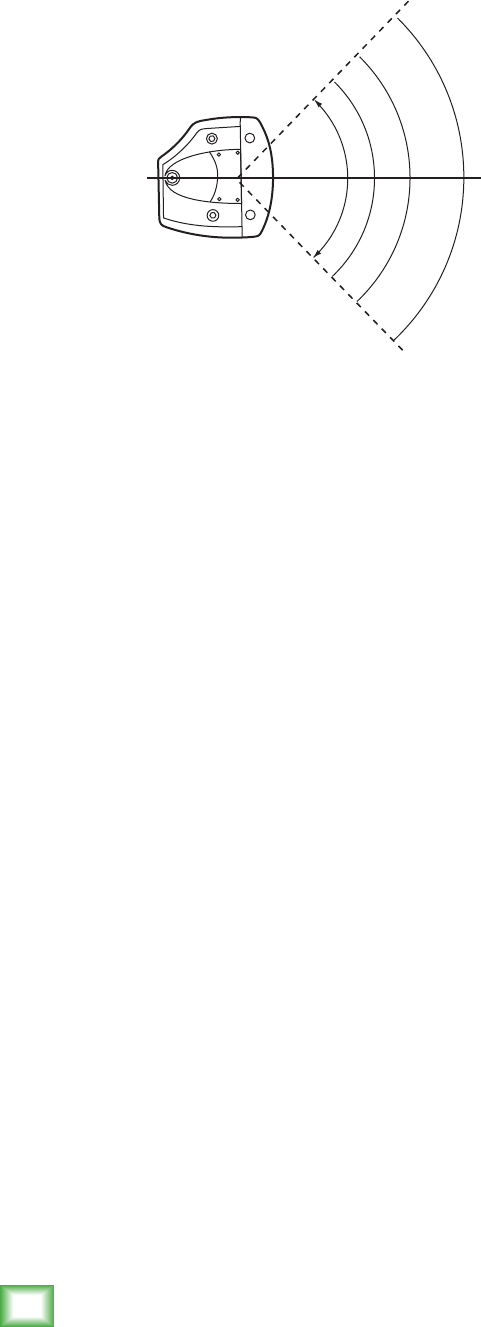
SRM350v3 and SRM450v3 Powered Loudspeakers
14
SRM350v3 and SRM450v3 Powered Loudspeakers
Room Acoustics
SRMv3loudspeakersaredesignedtosoundfantastic
innearlyeveryapplication.
But,roomacousticsplayacrucialroleintheoverall
performanceofasoundsystem.However,thewide
high-frequencydispersionoftheSRMv3loudspeakers
helpstominimizetheproblemsthattypicallyarise.
Herearesomeadditionalplacementtipstohelp
overcomesometypicalroomproblemsthatmightarise:
• Placingloudspeakersinthecornersofaroom
increasesthelowfrequencyoutputandcan
causethesoundtobemuddyandindistinct.
• Placingloudspeakersagainstawallincreases
thelowfrequencyoutput,thoughnotasmuch
ascornerplacement.However,thisisagood
waytoreinforcethelowfrequencies,ifso
desired.
• Avoidplacingthespeakersdirectlyona
hollowstageoor.Ahollowstagecanresonate
atcertainfrequencies,causingpeaksanddips
inthefrequencyresponseoftheroom.Itis
bettertoplacethemonasturdystanddesigned
tohandletheweightoftheloudspeaker.
Top
90
0
Dispersion
up to 20 kHz
90
0
• Positiontheloudspeakerssothehigh-
frequencydriversaretwotofourfeetabove
earlevelfortheaudience(makingallowances
foranaudiencethatmaybestanding/dancing
intheaisles).Highfrequenciesarehighly
directionalandtendtobeabsorbedmuch
easierthanlowerfrequencies.Byproviding
directline-of-sightfromtheloudspeakers
totheaudience,youincreasetheoverall
brightnessandintelligibilityofthesound
system.
• Highlyreverberantrooms,likemany
gymnasiumsandauditoriums,area
nightmareforsoundsystemintelligibility.
Multiplereectionsoffthehardwalls,ceiling,
andoorplayhavocwiththesound.Depending
onthesituation,youmaybeabletotakesome
stepstominimizethereections,suchas
puttingcarpetingontheoors,closing
draperiestocoverlargeglasswindows,or
hangingtapestriesorothermaterialsonthe
wallstoabsorbsomeofthesound.
However,inmostcases,theseremediesarenot
possibleorpractical.Sowhatdoyoudo?
Makingthesoundsystemloudergenerally
doesn’tworkbecausethereectionsbecome
louder,too.Thebestapproachistoprovideas
muchdirectsoundcoveragetotheaudience
aspossible.Thefartherawayyouarefrom
thespeaker,themoreprominentwillbethe
reectedsound.
Usemorespeakersstrategicallyplacedsothey
areclosertothebackoftheaudience.Ifthe
distancebetweenthefrontandbackspeakers
ismorethanabout100feet,youshouldusea
delayprocessortotime-alignthesound.(Since
soundtravelsabout1footpermillisecond,it
takesabout1/10ofasecondtotravel100feet.)
Keepinmindthatthespeakermodeandfeedback
destroyeraretwogreatwaystocompensateforsomeof
theseissues.Seepage11formoreinformation[8,9].


















